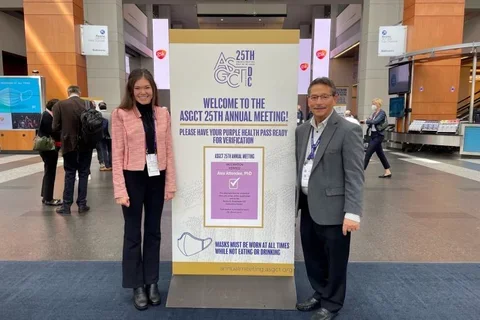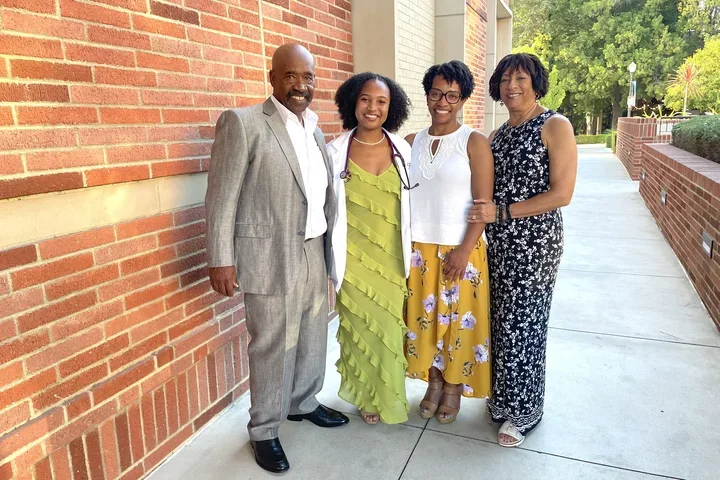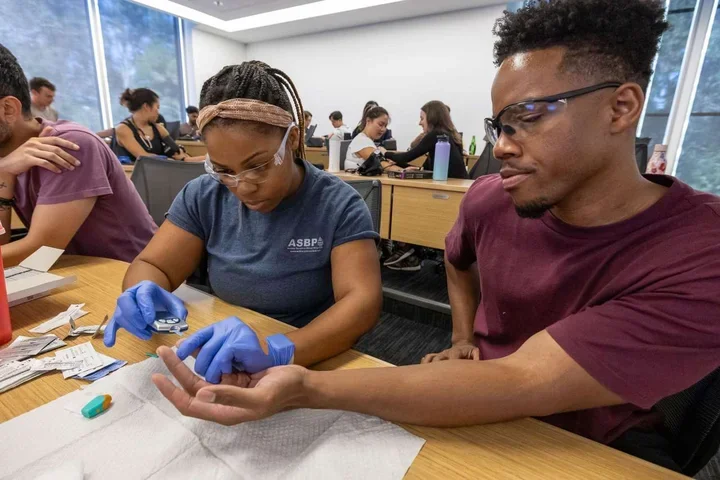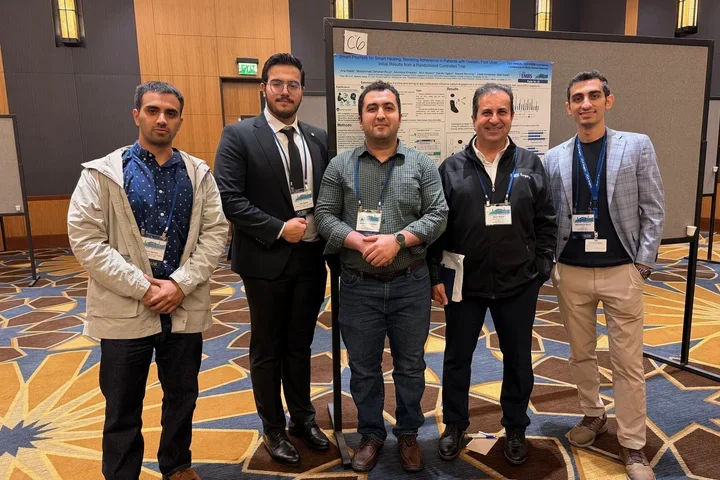UCLA researchers develop base editing approach for rare genetic immune disorder

New research indicates the novel gene editing technique base editing could be used as a one-time therapy to restore the production of T cells in patients born with the rare genetic immune disorder CD3 delta severe combined immunodeficiency.
This condition, also known as CD3 delta SCID, is caused by a mutation in the CD3 delta gene, which produces a protein by the same name that is critical to the formation of T cells. Babies born with CD3 delta SCID are unable to produce these white blood cells that fight against disease-causing intruders in the body.
Without T cells, patients do not have the ability to fight off infections and if untreated, often die within the first two years of life. Bone marrow transplantation can be curative, but it is often difficult to locate a healthy matched bone marrow donor and recovery from the transplant can bring complications.
In an oral presentation at the American Society of Gene & Cell Therapy’s 2022 Annual Meeting on May 17, Grace McAuley from the UCLA lab of Dr. Donald Kohnshared the results of preclinical studies, which found that base editing can correct the mutation that causes CD3 delta SCID and enable the production of functional T cells.
“We had never tried base editing in the lab before, so we weren't sure how well it was going to work in blood stem cells,” said Kohn, a member of the Eli and Edythe Broad Center of Regenerative Medicine and Stem Cell Research at UCLA. “Grace studied the known genetic mutation that causes CD3 delta SCID and recognized that it is an ideal target for this new approach.”
Base editing is based on the gene editing platform CRISPR-Cas9, and both techniques can be used to accomplish the same goal: changing a single base, one of the letters in the base pair that makes up a rung on the DNA ladder. However, CRISPR-Cas9 cuts both strands of DNA when making this change, while base editing cuts just one strand.
“Because base editing only nicks one strand of DNA, it has the potential to be more precise and efficient than other gene editing approaches,” said Kohn, who is also a distinguished professor of microbiology, immunology and molecular genetics in the UCLA College and of pediatrics and molecular and medical pharmacology at the David Geffen School of Medicine at UCLA. “However, this also makes its application more limited: a base editor can only be designed to target a single base and many genetic conditions are caused by mutations to different bases within the same gene.”
CD3 delta SCID is caused by the same mutation to a single base in all patients and accounts for less than 1% of SCID cases worldwide. The Kohn lab began studying this type of SCID after receiving a call from Dr. Nicola Wright, a physician-scientist at the Alberta Children's Hospital Research Institute.
“Dr. Wright reached out to ask if our lab could develop a gene therapy approach for CD3 delta SCID," said McAuley, a research associate in the Kohn lab. “While this form of the condition accounts for a small percentage of SCID cases globally, it comprises over 20% of Dr. Wright’s SCID patients.”
McAuley developed four gene editing approaches to target the mutation that causes CD3 delta SCID: one using CRISPR-Cas9 and three different base editors. To test the efficacy of these strategies, she used a human T cell line that she had genetically modified to contain the mutation that causes this condition.
Her excitement about base editing proved warranted: the best performing base editor corrected the CD3 delta mutation in 88% of cells, whereas CRISPR-Cas9 corrected the CD3 delta mutation in only 27% of cells.
Next, she tested the best performing base editor’s ability to correct the CD3 delta mutation in blood stem cells that were isolated from a baby with CD3 delta SCID. Blood stem cells have the ability to self-renew and form all kinds of blood and immune cells. However, T cells, which are formed by blood stem cells in the bone marrow, must travel to a small organ called the thymus, where they mature and gain the ability to recognize and eliminate foreign invaders.
So, to evaluate these corrected patient blood stem cells’ ability to form T cells, McAuley tapped into the expertise of UCLA Broad Stem Cell Research Center member, Dr. Gay Crooks, whose team developed a lab-grown human artificial thymic organoid — a cluster of cells that mimics the thymus.
McAuley compared what happened to non-corrected CD3 delta SCID patient cells in the thymic organoids with what happened to patient cells that had been base edited.
“The artificial thymic organoids allowed us to mimic and study what these cells would do inside of a patient’s body,” McAuley explained. “When the base edited patient cells aggregated inside the organoids, they produced T cells, whereas the non-corrected cells did not. It was a beautiful demonstration of this restored potential.”
McAuley, Kohn and Wright hope to work together to bring this therapy to a phase 1 clinical trial. If this project proves successful, the team projects similar base editing approaches could be applied to a range of inherited blood cell conditions, such as sickle cell disease and other primary immune deficiencies.
This research was funded by the Jeffrey Modell Foundation. The therapeutic approach described in this article has been used in preclinical tests only and has not been tested in humans or approved by the Food and Drug Administration as safe and effective for use in humans. The technique is covered by a patent application filed by the UCLA Technology Development Group on behalf of the Regents of the University of California, with Kohn and McAuley listed as co-inventors.
Original Article: "UCLA researchers develop base editing approach for rare genetic immune disorder"



